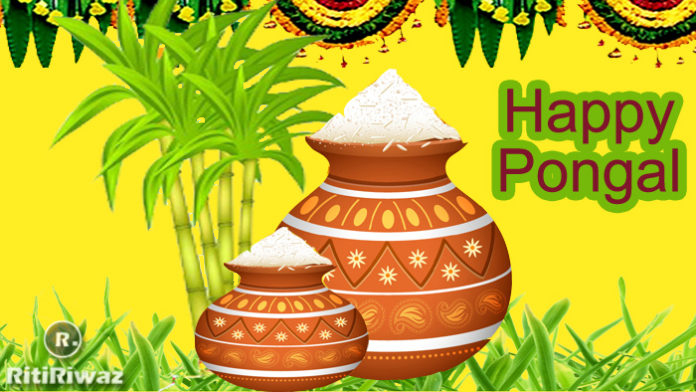Facts That Will Make You Proud To Be Indian

India is the seventh-largest country in the world in terms of geographical area, in the north, it is surrounded by the snow-capped Himalayan ranges, in the west the spectacular coastline of the Arabian sea, in the east, there is a vast Bay of Bengal and Indian ocean in the south. India has its own unique flora and fauna and hosts a distinctive ecosystem. India is known for its diversity, tradition, history, and culture.
Ancient India has witnessed years of foreign rule, religious movement, and spiritual discoveries, resulting in a rich collection of social habits, festivals, and customs. India never invaded any country in the last 100000 years of history. Here we are sharing some astounding facts about India you will be glad to know.
1. India name is derived from the “Indus” river
The name ‘India’ in English is derived from the river Indus, in which the early civilizations lived in the surrounding valley. The Aryan worshippers have termed this Indus River, Sindhu. The Indus River, also known as Sindhū by ancient Indians, is one of the longest rivers in Asia. Starting off in the Tibetan highlands of western China near Lake Mansarovar in Tibet Autonomous Region, the Indus river flows through the Ladakh district of Jammu and Kashmir. India is a Greek and Latin term for “the country of the River Indus”. The region through which the river drains into the sea is called Sindh and owes its name to the river (Sanskrit: Sindhu).
2. India was the richest country in the world before British Raj
India was one of the richest countries till the time of British rule in the early 17th Century. Christopher Columbus, attracted by India’s wealth, had come looking for a sea route to India when he discovered America by mistake. Before 200 years, the British came to one of the richest countries in the world- a country which had 23 percent of global GDP, the population was no problem, a country where poverty was unknown. For 1700 years and it remained the richest economy with a high population.
3. India is the second-most populous country in the world
India has the second-largest population in the world with 1,231,990,000 (over than 1.2 billion). India’s population is 17.3% of the entire world population. The most populous Indian state is Uttar Pradesh, with 200 million inhabitants. Our country covers only 2.4 percent of the land area of the world, whereas it is the home of more than 16.87 percent of the world’s population.
4. India has the world second largest English speakers
India is the second-largest English-speaking country after U.S. English is widely spoken all over the country, and India has more people who speak or understand English than any other country in the world. Though the percentage of fluent English speakers in India is a low, fairly large number of Indians can understand English.
5. Total 22 official languages of India
India has no national language, Hindi is the official language that is spoken in many states of the country. Apart from this, English is also spoken in many states of the country. Apart from this, there are languages like Tamil, Telugu, Kannada, Malayalam, Marathi which are spoken in 22 states of the country. 1,652 dialects and languages are used in India.
6. Diamond was first mined in India
For centuries, India was the only country in the world where diamonds were officially found. Diamond in India was known at least 3,000 – 6,000 years ago, earliest references were found in Sanskrit manuscript dated from 320-296 BC. In fact, until the 1730s India was the world’s only known source of diamonds. Diamond mining as an industry appears to have originated between 700 and 500 BCE in India.
7. Floating post office in Dal Lake
India has the largest postal network in the world. It has 1,55,035 post offices and over 5,66,000 employees. One unique form of the post office which can only be found in India is the Floating Post Office, Dal Lake, Srinagar. This type of post office is only such in India which is built on an intricately carved maroon houseboat on the western edge of Dal Lake. It is the world’s only floating post office which makes it unique and attracts a lot of tourists.
8. Games of Snakes and Ladders, chess first originated in India
The game of chess originated in India around the 6th century AD. It was played as chaturanga, a Sanskrit word that refers to the four branches of the army, namely- infantry, cavalry, elephants, and chariots. The unique game of snakes and ladders also originated in India in the 13th century. The game was originally called ‘Mokshapat’. The ladders in the game represented virtues and the snakes indicated vices.
9. The highest cricket ground is in Himachal Pradesh
The highest cricket stadium in the world is in Chail, Himachal Pradesh. This stadium is built 24 thousand meters above sea level. The Chail cricket ground was built in 1893 after leveling a hilltop. The cricket ground is surrounded by a thick forest of deodar and is also used as a polo ground. Imagine a hill being slashed, it’s top flattened out, that is how the ground was made. It was done under the instructions of the Maharaja of Patiala Bhupinder Singh. Later, after independence, the Maharaja donated it to the military school there.
10. Biggest Sundial in India
The biggest sundial is a gigantic equatorial dial in India. Maharajah Jay Singh built this complex in “Pink City” of Jaipur, Rajasthan. The big sundial tells the local time to within two seconds accuracy. There are also 12 astrological monuments for each sign of the Zodiac. Bowl-like tracking instruments tally the months of the year. All are set in gardens, surrounded by walls that keep the city buzz at bay.
11. Taxila university was one of the oldest universities in the world
Takshasila was the world’s first center of learning of excellence that existed around 2700 years ago, as early as 700 BCE, located in the northwest region of India. The university was a hub of over 10,000 students swarming in from different parts of the world to garner knowledge and education. Takshasila offered courses in more than 64 different fields of studies ranging from surgery and commerce to music and dance, and from philosophy and Ayurveda to grammar, politics, archery, and warfare.
12. Seed mathematics, trigonometry, and calculus also originated in India
The concept of ‘zero’, the most important number in mathematics, was given by India to the world. Zero was first used by Aryabhatta. Indians have contributed significantly to trigonometry, calculus, and algebra. It was in India itself that the decimal system was invented in 100 BC. The value of “pi” was first calculated by the Indian Mathematician Budhayana, and he explained the concept of what is known as the Pythagorean Theorem. He discovered this in the 6th century, long before the European mathematicians.
13. India has the second-largest pool of engineers and scientists
India has beaten all other countries of the world in creating engineers and science graduates. In India, the software services industry alone recruits about 300,000 people every year. Engineering tops the list of professions seen as most vital for economic growth. Other professions include business leaders, lawyers, doctors, and teachers. According to a report of the US-based National Science Foundation, it is stated that India is the world’s #1 country in producing engineering and science graduates.
14. Agriculture is the main source of income
Agriculture is India’s main source of revenue and income as 70% of its population live in villages. Agriculture plays a crucial role in the economy of developing countries and provides the main source of food, income, and employment to their rural populations. More people in India are supported by agriculture. 50% of people have the service sector as their main source of income while 50% of the population is employed by the agricultural sector who is supported by agriculture as their main income.
15. All religions are found in India
India is the only country where people of different religions live together. Hinduism, Buddhism, Jainism, and Sikhism were all born in India, and Christmas the birth of Jesus is marked as a national holiday. Some other religions found in India are Islam, the Bahai Faith, Zoroastrianism (religion of Parsis), Animism (religious faith of tribals).
16. Kumbh Mela can be seen from space
Kumbh Mela is the world’s largest gathering is held in Allahabad every 12 years. Kumbh Mela is the only fair in the world where most people come in the name of religion. The gathering is so large that it is visible from space. India’s high-resolution earth imaging satellite has captured pilgrims gather at a sacred location on the confluence of three major rivers, Ganges, Yamuna, and Saraswati.
17. Women owns 11% of the world’s gold
India is at the forefront of buying gold in the world. Gold is considered the most important part of India’s culture, whether it is as a gift or to be used in a wedding ceremony. The yellow metal is considered very precious and a symbol of prosperity. Their obsession with gold has pushed them to accumulate more gold than all the reserves of the IMF, USA, Germany, and Switzerland put together.
18. India had a village with no locks or doors
Shani Shingnapur is a village in Ahmednagar district of Maharashtra is famous as the house of this village has no doors. The resident of the village feels no need of security as they believe that Hindu deity Shani, whose temple is located in the village will protect them. Following the village tradition, people have no doors and lock in their homes and continue to live in peace and harmony in this ‘doorless’ village.
19. Tirupati temple has the largest religious visitors in the world
Tirupati Temple in Andhra Pradesh, India is the only temple in the world that has the highest number of devotees (30,000–40,000 visitors per day). It is also visited by devotees from the Vatican and Mecca. It is also the richest Hindu temple in the world with an annual budget of $57.02 million (£35.2 million). Located on the seventh peak of the Tirumala Hills in Tirupati, Andhra Pradesh, the temple is dedicated to the incarnation of Vishnu, Venkateshwara, and is also called – Temple of Seven Hills.
20. India has the largest number of vegetarians in the world.
India has a reputation as a vegetarian nation, and Indians certainly consume far less meat than the global average. India’s cultural and religious traditions promote vegetarianism. Hindu and Jains follow vegetarianism due to religious and cultural stigma associated with it. A large group of vegetarians is Brahmins, Jains, Vaishyas, and self-proclaimed vegetarians. Some follow special days and special occasions to be vegetarians so Indians are “day-terians”.
Suggested Read: Quotes on India by famous personalities






